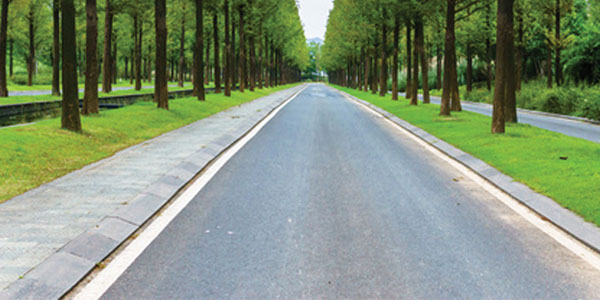 |
 Bill Lauto is an Environmental Scientist and Energy Consultant who has been teaching how we can save our money, energy, environment, and health, since 1982. Mr. Lauto operates GoingTrueGreen.com and his work has been published in magazines such as: Consumer Report, Kiplinger's Financial and Business Ethics. |
| After a pilot program around the neighborhood of Canoga Park in San Fernando Valley, the state of California thinks they have an answer to the Urban Heat Island Effect. This is when miles and miles of asphalt, a.k.a blacktop, heats up in the hot sun light. As the surface temperatures of the blacktop road increase, so does the ambient heat that radiates throughout the surrounding air. This can cause an average air temperature increase of 22 degrees Fahrenheit in the hot summer months. California's answer is: Paint the blacktop roads white! The pilot program was declared a success. A success for wet skid tests, durability and lower surface temperatures. Now we all know a lighter color, white for example will reflect heat while darker colors will absorb heat. That explains why an average 10 to 15 degree decrease was noted when the CoolSeal white paint was used. However, what about the cost to apply that paint not once, but twice and the following unanswered questions? Many are saying this is a half baked idea because several concerns are not answered. The first thing I thought about was the paint, with only a 7 year life expectancy, wearing off and washing down the sewers. This in turn will go into our waterways. Healthwise, does anybody want to add white paint to our water tables? Another risk to our health and wellness is the increased amount of glare off the white surface when the sun is setting and rising. Do we need to increase the risk of car accidents due to blinding reflecting glare? Let us stay with a more natural solution as easy as planting trees, because the better solution is planting trees! One main advantage is that planting trees will cost far less than the $40,000.00 per mile to paint! For clarification, when I speak of planting trees, I don't mean Palm trees that cast less shade. There are several trees appropriate for curb side that cast a great deal of shade and don't need large amounts of water. Trees such as: Amur and Trident Maples, American Hornbeam, and Crape Myrtle. Additionally, trees last far longer than 7 years. They also prevent paint from entering our waterways and drinking water tables and decreases glare on the roads. I am hoping that Long Island does not make the same mistake of putting people at risk. The neighborhood streets of Long Island will do just fine staying with a more logical solution, increasing the canopy and foliage along our roads with the correct curb side trees. That is by far the most natural and safe solution. |
|












 20 lucky winners will win $500 each in prizes totaling $10,000.
20 lucky winners will win $500 each in prizes totaling $10,000. 